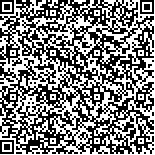|
|
|
| |
|
|
| 本文已被:浏览 887次 下载 624次 |

码上扫一扫! |
|
|
| 慢性失眠中医证型与多导睡眠图参数相关性研究 |
|
谭云霞1, 纪可1, 刘福贵1, 陈柳伊1, 谢瑞亮1, 刘玲1,2
|
|
1.湖北中医药大学, 武汉 430065;2.湖北省中医院脑病科, 武汉 430061
|
|
| 摘要: |
| [目的] 观察慢性失眠中医证型与多导睡眠图参数的相关性。[方法] 回顾性观察湖北省中医院脑病科门诊就诊的慢性失眠患者83例,总结一般病情资料、中医证型特点及其多导睡眠图特点。[结果] 慢性失眠的发病率女性略高于男性,且60岁以上人群的发病率较高。中医证型主要为阴虚火旺型(43例)、心脾两虚型(40例)。阴虚火旺型和心脾两虚型患者的睡眠效率分别是66.43%、61.71%,均低于正常水平,但两组间比较差异无统计学意义(P>0.05)。睡眠进程:与心脾两虚型患者相比,阴虚火旺型患者的睡眠潜伏期时间延长,睡眠时相后移,但夜间觉醒时间(ATA)较短,差异有统计学意义(P<0.05)。睡眠结构:与心脾两虚型相比,阴虚火旺型患者快速眼动动眼睡眠潜伏期时间缩短,快速眼动睡眠期(REM)的占比增加,差异有统计学意义(P<0.05),而慢波睡眠时间(SWS)占比减少,差异无统计学意义(P>0.05)。[结论] 心脾两虚型和阴虚火旺型是慢性失眠临床常见的虚证证型,两个证型多导睡眠图的参数之间存在差异,提示多导睡眠图的参数可以作为中医药防治慢性失眠的客观指标,为后期临床试验提供参考。 |
| 关键词: 慢性失眠 中医证型 心脾两虚型 阴虚火旺型 多导睡眠图 |
| DOI:10.11656/j.issn.1673-9043.2022.05.07 |
| 分类号:R256.23 |
| 基金项目:国家重点研发计划中医药现代化研究重点专项项目(2018YFC1705602)。 |
|
| Study on correlation between traditional Chinese medicine syndrome types and polysomnography parameters of chronic insomnia |
|
TAN Yunxia1, JI Ke1, LIU Fugui1, CHEN Liuyi1, XIE Ruiliang1, LIU Ling1,2
|
|
1.Hubei University of Chinese Medicine, Wuhan 430065, China;2.Department of Encephalopathy, Hubei provincial Hospital of Traditional Chinese Medicine, Wuhan 430061, China
|
| Abstract: |
| [Objective] To observe the correlation between traditional Chinese medicine (TCM) syndrome types and polysomnography parameters of chronic insomnia.[Methods] The 83 patients with chronic insomnia who came to our outpatient department were observed retrospectively. The general condition data, TCM syndrome characteristics and polysomnography characteristics were summarized.[Results] The incidence rate of chronic insomnia of women was slightly higher than that of men, and the incidence of chronic insomnia was higher over 60 years old. There were 43 cases of yin deficiency and fire excess type and 40 cases of heart-spleen deficiency type. The sleep efficiency of yin deficiency and fire excess type and heart-spleen deficiency type were 66.43% and 61.71% respectively, which were lower than the normal level, but there was no significant difference between the two groups. Sleep process:compared with patients of heart-spleen deficiency type, patients of yin deficiency and fire excess type had longer sleep latency and later sleep phase, but shorter night awakening time, the difference was statistically significant (P<0.05). Sleep structure:compared with the heart-spleen deficiency type, the latency time of rapid eye movement sleep was shortened and the proportion of rapid eye movement sleep(REM) was increased in patients with yin deficiency and fire excess, the difference was statistically significant(P<0.05), while the proportion of slow wave sleep time(SWS) was reduced, and there was no significant statistical difference (P>0.05).[Conclusion] Both heart-spleen deficiency type and yin deficiency and fire excess type are common clinical deficiency syndrome of chronic insomnia. There are significant differences in the parameters of polysomnography between the two syndrome types, suggesting that the parameters of polysomnography can be used as an objective index of traditional Chinese medicine in the prevention and treatment of chronic insomnia and provide reference for later clinical trials. |
| Key words: chronic insomnia traditional Chinese medicine syndrome type deficiency of heart and spleen yin deficiency and fire flourishing type polysomnography |
|
|
|
|
